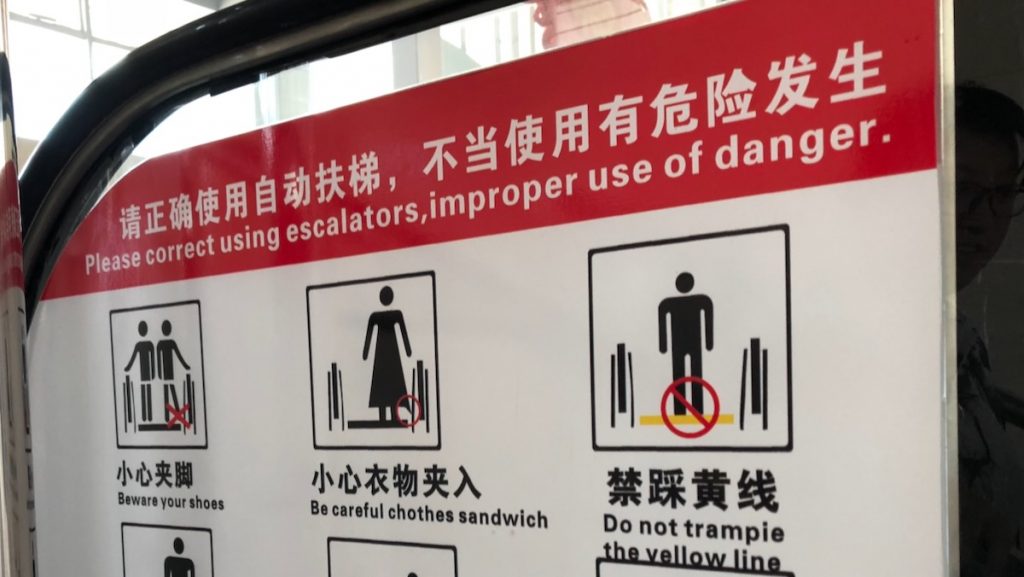
Chinglish is funny (maybe) — until not very. At the latest, when a badly-done sign causes you to miss your train, or plane…
David Feng has seen probably too many cases of Chinglish — too many to be deemed sane or safe. He’s also corrected these, talked to frontline staff, liaised with linguists… in short, he knows Chinglish, but also how to do signs right.
He can help!
Below are some suggestions on how to ensure your sign is happily Chinglish-free. And if you have signs you want to him to check is correct, contact him (this is a paid service!).
Five things to note if you don’t want Chinglish on your signs…
- Understand English works differently from Chinese. If you’re writing something in English, write it thinking in English. Don’t be afraid to take a look at how signs work abroad — before you add English to signage.
- As much as you can, avoid verbatim, word-for-word translations. Also, don’t over-translate Pinyin (“Beijing” is OK, “north capital” is not, unless you expressly want it to mean that).
- Pinyin uses the same “alphaset”, if you wish, as English, so it looks like English, but is not always English (some words are, though, such as hutong and fapiao). Never use Pinyin “in place of” English.
- Don’t blindly worship digital devices — the likes of Google Translate or AI. ChatGPT is not The Ultimate Authority — and cannot replace a living, breathing linguist.
- Details matter. Grammar, and especially, spelling, matter. Otherwise, it’ll just be one minor typo that will turn Restrooms into Pestrooms!
